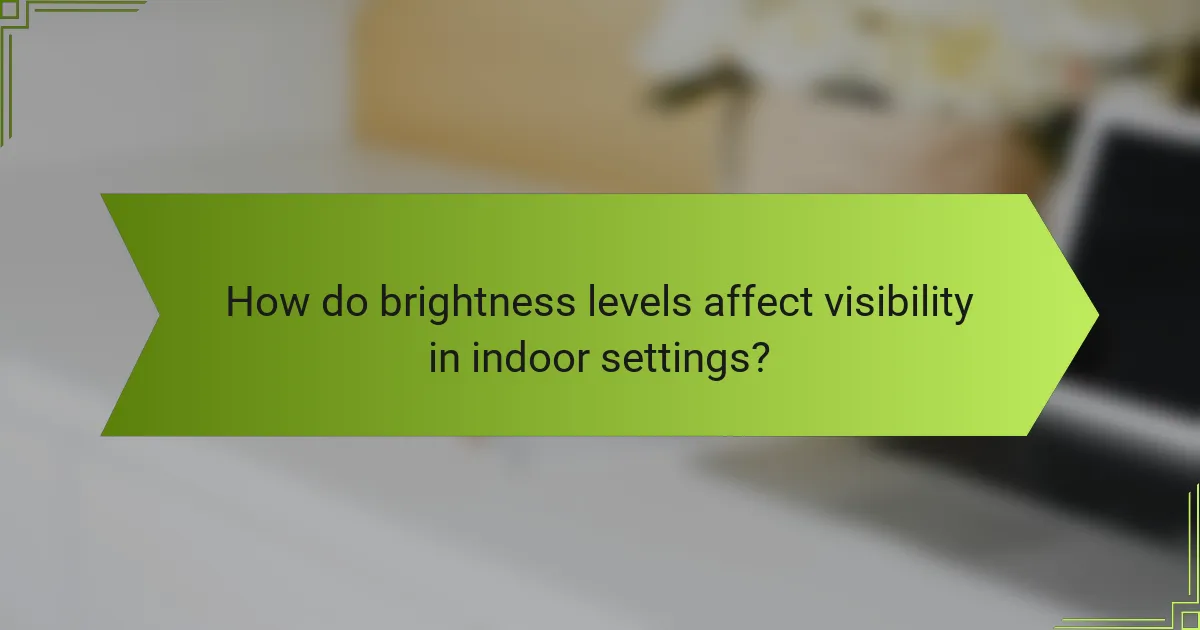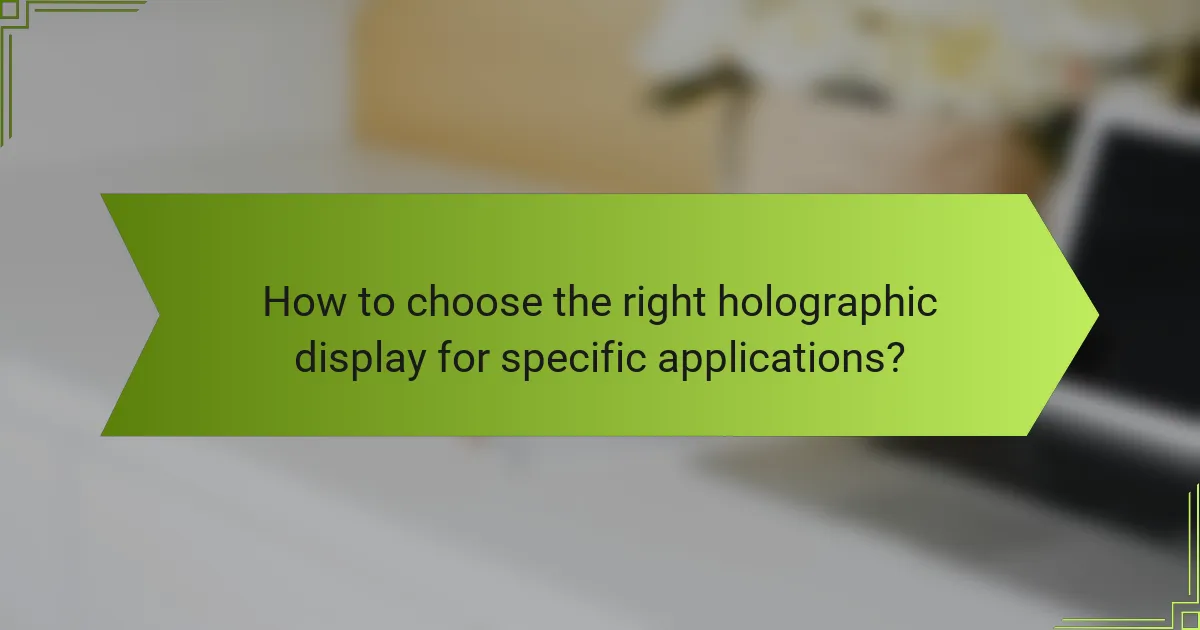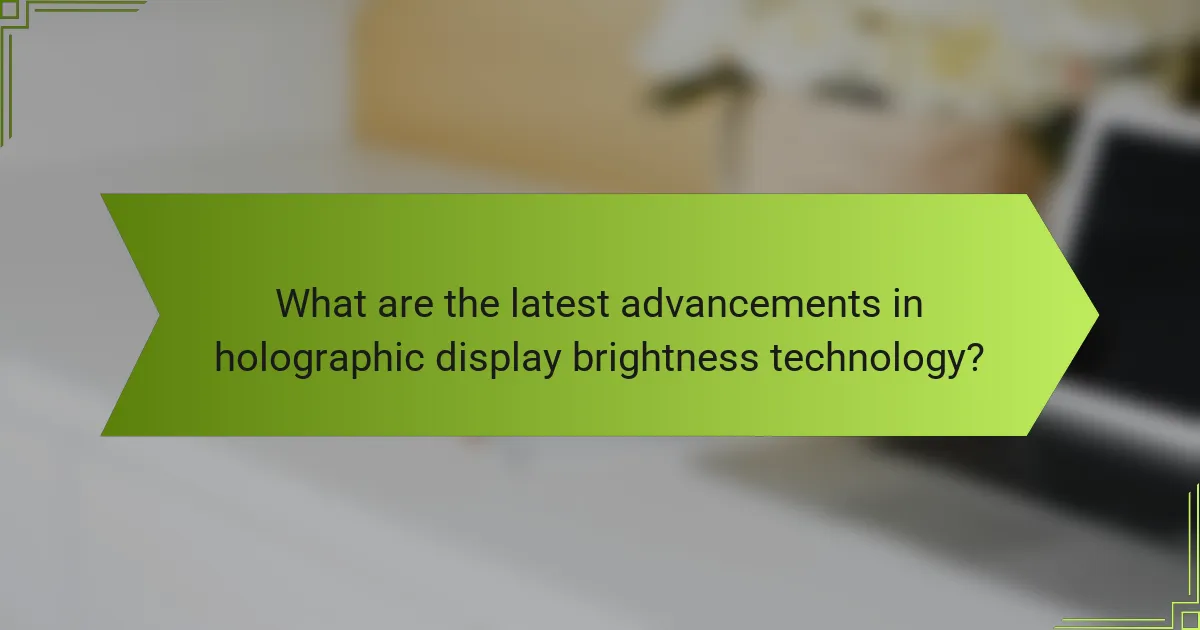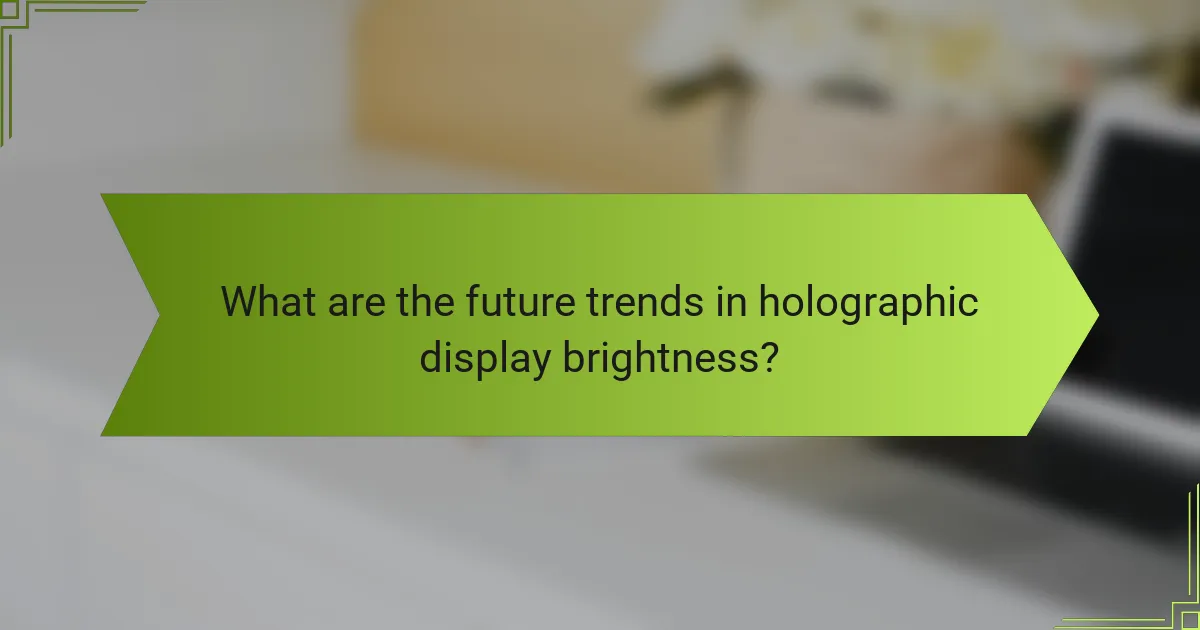Brightness levels play a critical role in the performance of holographic displays, with optimal settings varying significantly between indoor and outdoor environments. In outdoor settings, brightness levels between 2000 to 3000 nits are essential for visibility in bright sunlight, while indoor displays require careful calibration to prevent eye strain and ensure clarity. By considering factors such as ambient light, viewing distance, and angle, we can enhance user experience and interaction across diverse settings.

What are the optimal brightness levels for holographic displays in outdoor environments?
The optimal brightness levels for holographic displays in outdoor environments typically range from 2000 to 3000 nits. These levels ensure visibility under bright sunlight, enhancing user experience and interaction.
Minimum brightness of 2000 nits
A minimum brightness of 2000 nits is essential for holographic displays used outdoors, as it allows for adequate visibility in direct sunlight. Displays with this brightness level can effectively project images that remain discernible against bright backgrounds.
When selecting displays, consider that 2000 nits is often the baseline for outdoor applications. This level helps prevent image washout and maintains clarity, particularly during midday when sunlight is most intense.
Recommended brightness of 3000 nits
For optimal performance, a brightness level of 3000 nits is recommended for holographic displays in outdoor settings. This higher brightness ensures that images are vibrant and easily viewable, even in challenging lighting conditions.
Displays at this brightness level are particularly useful for applications such as advertising or public information systems, where visibility is crucial. Investing in displays with 3000 nits can significantly enhance user engagement and satisfaction, making them a preferred choice for outdoor installations.

How do brightness levels affect visibility in indoor settings?
Brightness levels significantly impact visibility in indoor environments, influencing how clearly images and text are perceived. Optimal brightness ensures that displays are easily readable without causing eye strain, particularly in varying lighting conditions.
Ideal brightness range of 500 to 1000 nits
The ideal brightness range for holographic displays in indoor settings typically falls between 500 to 1000 nits. This range provides sufficient luminance to ensure visibility without overwhelming the viewer’s eyes. Displays operating within this spectrum can effectively convey details and colors, enhancing the overall user experience.
For instance, a display set at 700 nits is generally bright enough for most indoor applications, such as presentations or interactive displays, while maintaining comfort for viewers. Adjusting brightness levels within this range can help accommodate specific tasks or user preferences.
Impact of ambient light on display performance
Ambient light plays a crucial role in determining the effective visibility of holographic displays. High levels of ambient light can wash out images, making it difficult to discern details unless the display brightness is adjusted accordingly. Conversely, in dimly lit environments, lower brightness settings may suffice.
To optimize display performance, consider the lighting conditions of the room. For example, in a brightly lit conference room, increasing the display brightness to the upper end of the ideal range may be necessary. Regularly assessing the ambient light and adjusting the display settings can prevent visibility issues and enhance user engagement.

What factors influence brightness requirements in different environments?
Brightness requirements for holographic displays vary significantly based on environmental factors such as ambient light, viewing distance, and angle. Understanding these elements is crucial for optimizing display performance and ensuring visibility in diverse settings.
Ambient light conditions
Ambient light conditions play a critical role in determining the necessary brightness for holographic displays. In brightly lit environments, such as offices or outdoor settings, displays may need to reach higher brightness levels, often exceeding 1000 nits, to remain visible. Conversely, in darker environments, lower brightness settings can suffice, typically around 300-500 nits.
When evaluating ambient light, consider the time of day and the presence of reflective surfaces that can amplify light. For instance, a display in a sunlit room may require adjustments to avoid glare and ensure clarity.
Viewing distance and angle
Viewing distance and angle significantly impact how brightness is perceived. Displays viewed from a closer distance may need higher brightness to maintain clarity, while those viewed from afar can operate effectively at lower levels. As a general rule, for distances under 1 meter, brightness should be at least 600 nits, while for distances over 3 meters, around 300-400 nits may be adequate.
Additionally, the angle at which a display is viewed can affect brightness perception. Displays should be designed to maintain brightness across a wide viewing angle, ideally 160 degrees or more, to ensure consistent visibility for multiple viewers. Adjusting display settings based on these factors can enhance user experience and effectiveness.

How to choose the right holographic display for specific applications?
Choosing the right holographic display involves evaluating the intended application, environmental conditions, and specific performance requirements. Key factors include brightness levels, resolution, and the display’s ability to render 3D images effectively in various settings.
Assessment of use case scenarios
Different applications require distinct holographic display characteristics. For instance, displays used in medical imaging must offer high brightness and clarity to ensure accurate diagnosis, while those for advertising may prioritize vibrant colors and dynamic content. Assessing the environment—such as lighting conditions and viewer distance—is crucial for optimal performance.
Consider scenarios like trade shows, where displays need to attract attention in bright environments, versus quiet settings like museums, where subtlety and detail are more important. Each use case will dictate specific requirements for brightness, resolution, and viewing angles.
Comparison of leading brands like Holoxica and VividQ
Holoxica and VividQ are prominent players in the holographic display market, each offering unique strengths. Holoxica focuses on high-resolution displays suitable for technical applications, such as engineering and medical fields, providing detailed 3D visualizations. Their products often excel in brightness levels, making them effective in various lighting conditions.
On the other hand, VividQ specializes in software solutions that enhance the performance of existing displays, allowing for more flexible applications across industries. Their technology can adapt to different hardware, making it a versatile choice for businesses looking to integrate holographic displays without significant hardware investment.

What are the latest advancements in holographic display brightness technology?
Recent advancements in holographic display brightness technology focus on enhancing visibility in various lighting conditions. Innovations such as microLED technology and adaptive brightness control are key to achieving optimal performance across different environments.
Development of microLED technology
MicroLED technology represents a significant leap in display brightness, offering higher luminance and improved color accuracy. This technology utilizes tiny, individual light-emitting diodes that can produce bright images without the need for backlighting, making them more efficient and capable of achieving higher brightness levels.
For instance, microLED displays can reach brightness levels exceeding 1,000 nits, which is beneficial for outdoor applications where sunlight can wash out traditional displays. The compact nature of microLEDs also allows for thinner and lighter display designs, enhancing portability.
Improvements in adaptive brightness control
Adaptive brightness control systems automatically adjust the display’s brightness based on ambient light conditions. This technology enhances user experience by ensuring optimal visibility without manual adjustments, which can be cumbersome in dynamic environments.
These systems typically use sensors to detect surrounding light levels and can adjust brightness in real-time. For example, in a dimly lit room, the display may reduce brightness to minimize eye strain, while in bright outdoor settings, it can ramp up to maintain clarity. This capability not only improves usability but also extends the lifespan of the display by reducing unnecessary power consumption.

How do environmental factors impact the performance of holographic displays?
Environmental factors significantly influence the performance of holographic displays by affecting brightness levels, clarity, and overall image quality. Conditions such as humidity, temperature, dust, and pollution can alter how effectively these displays function in various settings.
Effects of humidity and temperature
Humidity and temperature can greatly affect the optical properties of holographic displays. High humidity levels may lead to condensation on the display surface, which can obscure images and reduce brightness. Conversely, extremely low humidity can cause static electricity buildup, potentially damaging sensitive components.
Temperature fluctuations can also impact the materials used in holographic displays. For instance, excessive heat may warp components, while cold conditions can lead to slower response times. Maintaining a stable environment, ideally between 20-25°C (68-77°F) with moderate humidity, is recommended for optimal performance.
Influence of dust and pollution
Dust and pollution can significantly degrade the performance of holographic displays by obstructing light paths and reducing clarity. Accumulated dust particles on the display surface can scatter light, leading to diminished brightness and contrast. Regular cleaning is essential to maintain optimal visibility.
In urban areas with high pollution levels, displays may require more frequent maintenance due to the buildup of particulate matter. Using protective covers or filters can help mitigate these effects, ensuring that the display remains clear and functional in challenging environments.

What are the future trends in holographic display brightness?
Future trends in holographic display brightness focus on achieving higher luminance levels while maintaining color accuracy and energy efficiency. Innovations in materials and technologies are expected to enhance visibility in various lighting conditions, making holographic displays more versatile for consumer and professional use.
Emerging standards for brightness calibration
As holographic displays evolve, emerging standards for brightness calibration are crucial for ensuring consistent performance across devices. Organizations like the International Telecommunication Union (ITU) are working on guidelines that define optimal brightness levels for different environments, which can help manufacturers align their products with industry expectations.
Calibration techniques may include the use of photometric measurements to assess brightness in controlled settings. Users should look for displays that comply with these standards to ensure reliable performance, particularly in professional applications such as design and medical imaging.
Integration with augmented reality systems
Integrating holographic displays with augmented reality (AR) systems is a significant trend that enhances user experience by providing immersive visuals. This integration requires displays to adapt their brightness dynamically based on ambient light conditions, ensuring clarity and reducing eye strain.
For effective integration, developers should consider the display’s ability to adjust brightness in real-time, which can be achieved through advanced sensors and software algorithms. Users should prioritize systems that offer seamless brightness adjustment to maintain visual fidelity in varying environments, such as outdoor settings or dimly lit rooms.
